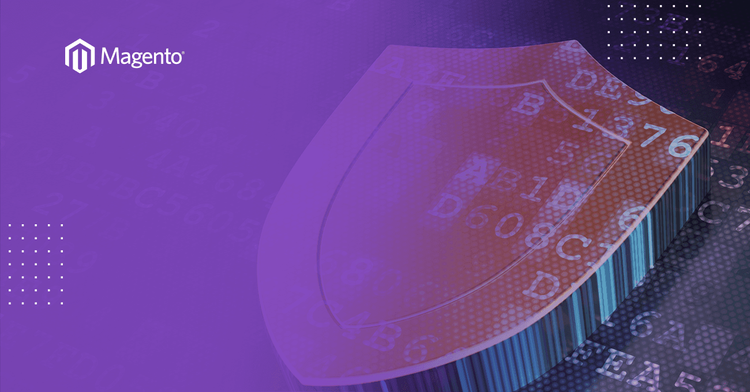
The following text has been reviewed and updated as of July 2025 for factual accuracy, reflecting the current state of Magento versions and best practices for upgrading the eCommerce platform.
Magento is one of the largest and most trusted open-source eCommerce platforms. But along with its functionality, the fact that it is so popular makes it a common target for malicious attacks.
Even though Magento has built-in security features that help you keep your website safe, you can always take some additional steps to secure your store. Here are some of the best ways you can improve your Magento website security and keep your customers’ information safe.

How to Improve Your Magento Store Security
The following text has been reviewed and updated as of July 2025 for factual accuracy, reflecting the current state of Magento versions and best practices for upgrading the eCommerce platform.
Magento is one of the largest and most trusted open-source eCommerce platforms. But along with its functionality, the fact that it is so popular makes it a common target for malicious attacks.
Even though Magento has built-in security features that help you keep your website safe, you can always take some additional steps to secure your store. Here are some of the best ways you can improve your Magento website security and keep your customers’ information safe.
1. Regular Updates
Like all eCommerce software, Magento works best when you use the latest version and keep up with patch releases. This guarantees your store is up-to-date with the latest threats and has adequate protection. Regular Magento updates provide feature upgrades, bug fixes, and critical security updates to create a secure environment for your store. If you ignore or delay these patches, you compromise your Magento store's security and endanger your customers’ data.
With this in mind, make sure you only use trusted and verified extensions that have a track record of dependability. All extensions have to be updated like your Magento store when new versions come out.
Updates should be applied responsibly, as extensions and themes can give attackers a way into your store’s most critical areas or simply break your site. Working with a developer who can audit the code of these extensions and themes can minimize these dangers. Always test new applications in a development environment before deploying them to your live store, and create backups of your site files and databases to prevent data corruption or security breaches.
Not Sure If Your Store Is Fully Protected?
2. Additional Protection
Magento 2 comes with built-in Two-Factor Authentication (2FA) functionality that provides an additional layer of protection for your Magento store. It allows you to authorize access to the store only for trusted devices. This extra level of security for your admin panel login makes it harder for hackers to intercept messages and hack into accounts. Two-Factor Authentication (2FA) secures your Magento backend and mitigates most password-related Magento security risks.
In addition to two-factor authentication, you can also restrict the Magento administrator login page to specific IP addresses you have whitelisted.
3. SSL Connection
Using SSL/TLS encryption is no longer optional; it’s a baseline requirement for any modern website. Most browsers will flag non-HTTPS pages as insecure, making them difficult or impossible for users to access. Search engines also penalize sites without SSL, affecting your visibility.
For Magento stores, an SSL certificate ensures that sensitive data, like customer credentials, payment information, and login details, is transmitted securely. Whether you choose a paid certificate from a trusted authority or a free one from Let’s Encrypt, enabling full-site HTTPS is essential. Make sure your Magento configuration forces HTTPS on all pages, not just the checkout or login sections.
💡 A secure connection is only one piece of the puzzle. Your payment gateway also plays a crucial role in keeping customer data safe — learn what to look for in our guide to choosing the best Magento payment gateway.
4. Limited Access Points
You can use different methods to access your Magento site files and database. Depending on your intended task, you can use SSH or a web hosting control panel. Don’t reuse the same password for all methods. Creating and remembering a unique, strong password for each method is not the most efficient way to do it. Opt for Public-key cryptography instead. In addition, try to use connection methods like SSH, SFTP, or SCP for additional security.
You don’t want your administrator login page to be easy to locate, as this makes your Magento store more vulnerable to brute force attacks. A great deal of brute force attacks use scripts specifically designed to check the /admin path for your login page. Obscure the path to the Magento Administrator Panel to prevent intrusions. This will not make your store immune to brute force attacks, but it will deflect the attacks relying on those scripts.
Magento allows you to create multiple administrator accounts, each with tailored permissions. Not all users need access to every part of the backend. By using Magento’s Access Control Lists (ACL), you can assign roles with limited access to specific tools and features.
This reduces the risk of damage if an account is compromised and makes it easier to trace security breaches. Always keep admin accounts separate and apply the principle of least privilege.
5. Regular Backups
Backups of your Magento files and database should be performed on a regular basis. This allows you to minimize the amount of damage that an attack can cause. All backups should be kept on a different server from the one that hosts your Magento store. Ideally, you should keep a copy on your local computer as well as on a separate USB external hard drive.
The most important part of your Magento store is your webstore configuration file. It holds your most critical database information, including your username, password, table prefixes, and the crypt_key, which is used to encrypt sensitive information, including store payment gateway data.
If they gain access to it, all of your clients’ data is in danger, including their emails, passwords, credit card data (if you store them within your Magento instance, which shouldn’t be done in the first place), and addresses. As a means of prevention, verify that your folders’ permissions and web server’s configuration are correctly set i.e files including configuration credentials and code files can’t be accessed directly from the internet browser.
For added security, also restrict permissions on any other files containing sensitive information, such as login credentials.
6. Password Policy
One simple way to improve your Magento store's security is to implement your own password policy with certain requirements. The best practices for a password policy include:
Use password managers, such as LastPass, BitWarden, 1Password, etc.
Use only unique passwords.
Establish complexity requirements.
Change your password regularly.
Do not reuse passwords.
Download: The Ultimate Guide to Optimizing Magento 2 Speed
💡 Download your free copy of the Ultimate Guide to Optimizing Magento 2 Speed. Benefit from Top 10 proven strategies to improve web store performance, and optimize page loading speeds - selected by our Senior Magento Developers.
Final Thoughts
No Magento store is 100% secure, but by implementing the security improvements we described above, you will significantly decrease the number of vulnerabilities that can be exploited.
💡 Want to go a step further? Our in-depth post on protecting your Magento store from hackers walks you through server-side precautions, 2FA enforcement, and safe module usage.
Ready to Audit Your Store?
Want to evaluate the health of your Magento site? Let’s talk and let our certified Magento developers help you spot vulnerabilities, optimize performance, and secure your store from top to bottom.
On-demand webinar: Moving Forward From Legacy Systems
We’ll walk you through how to think about an upgrade, refactor, or migration project to your codebase. By the end of this webinar, you’ll have a step-by-step plan to move away from the legacy system.

Latest Blog Posts
Is Your Magento Store Really Secure? Let’s Find Out Together
Quick Risk & Version Check
We assess your Magento version, patch status, and infrastructure to flag potential vulnerabilities.
Technical Snapshot
You get a clear overview of your codebase, extensions, performance, and server environment.
Expert Recommendations
We tell you what’s worth upgrading, what’s urgent, and what can wait—based on your business context.

